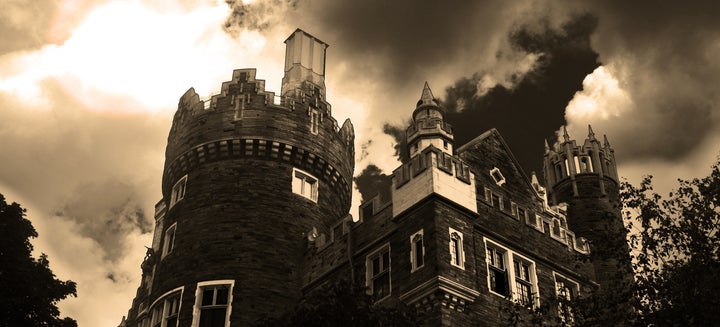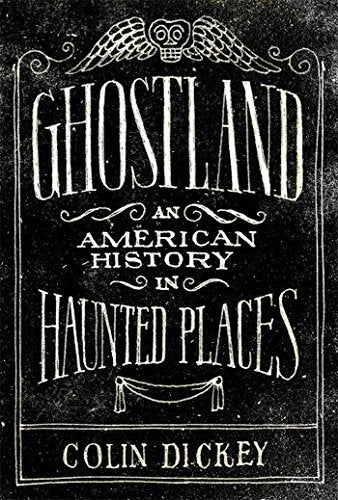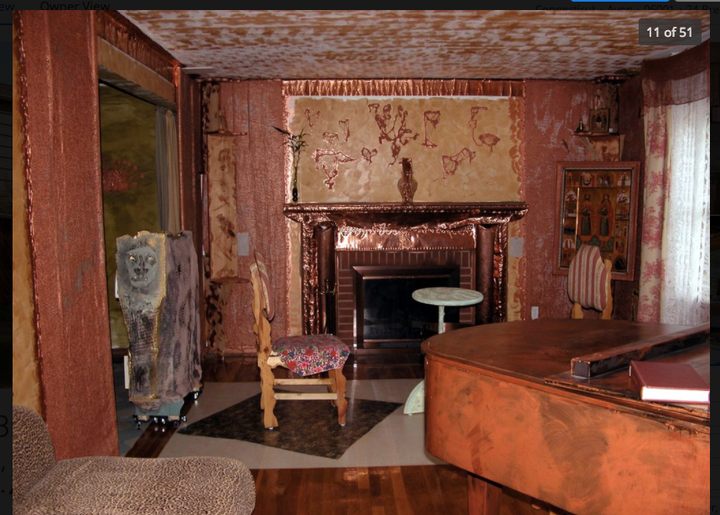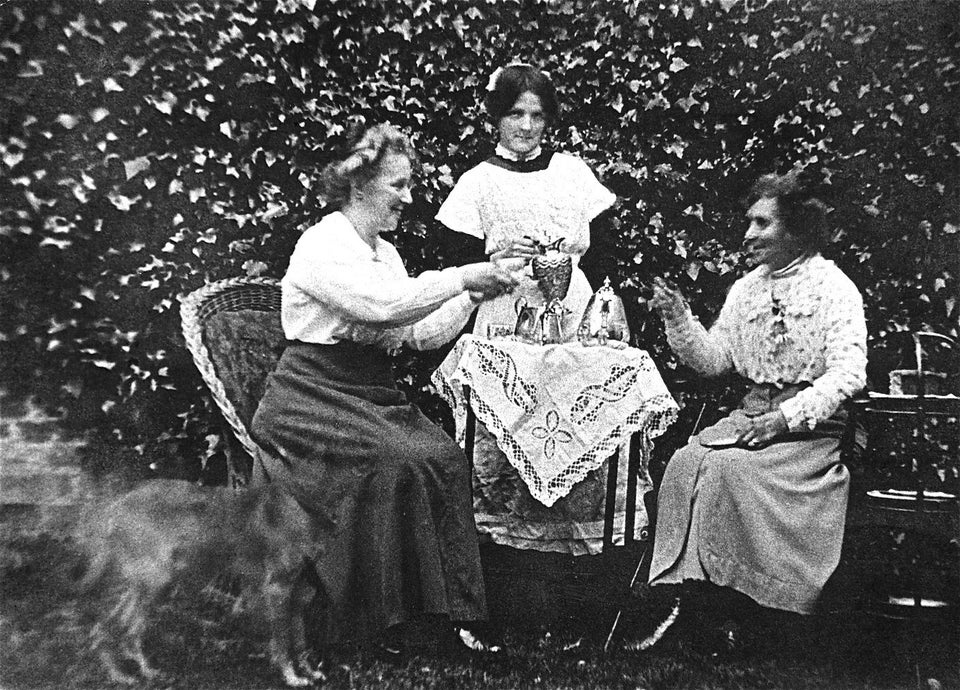
A year ago, my then-boyfriend and I were looking for an apartment in Brooklyn. We lived in Manhattan, but wanted to retreat a bit from the bustle of the East Village. Selfishly, I wanted an apartment that was newer and easier to clean than our crumbling old walk-up. That’s how our realtor ended up directing us to 123 on the Park, a massive edifice on the southeast edge of Prospect Park.
Flashily renovated, lavishly appointed with amenity after amenity and right on the park, the rental property was a real estate dream. And because it was fairly distant from Manhattan, the price for a one-bedroom was surprisingly low. Yet, my boyfriend and I felt something was amiss. The way the fortified brick structure loomed over the rest of the neighborhood seemed unwelcoming, and the residence was so quiet the agent showing us around actually commented on it. “It’s so well-insulated; it sounds like no one lives here. But it’s actually full!” he told us brightly and unconvincingly.
Later, we wandered around the neighborhood. Although the few residents we saw in 123 on the Park were young white couples and families, most of the neighbors were black. Everyone was friendly, but it was obvious that we newcomers were harbingers of gentrification. The property itself stood self-consciously in the midst of the neighborhood, like a spaceship sent down by hostile aliens bent on eventual takeover. Our unease only grew.
We didn’t take the apartment. I moved with my boyfriend, now fiancé, to another neighborhood. We forgot all about the building, or at least its name. Then I picked up Colin Dickey’s new book, Ghostland: An American History in Haunted Places, and found myself reading about a building that reminded me so strongly of the one we’d viewed, it sent a chill up my spine:
In Brooklyn the former Caledonian Hospital, overlooking the south side of Prospect Park, was transformed in 2014 into a luxury rental property, and almost immediately the ghosts moved in. Stories of strange smells, unexplained sounds, and other haunted phenomena began to emerge, and three doormen quit over the course of six months. [...] The managing director of the property group that manages the building confirmed to local papers that there was high staff turnover and that there have been issues in renting units.
It took me just a few minutes on Google to confirm that it was the very apartment building that had given us the creeps ― though we hadn’t heard any ghost stories. Dickey dug deeper than the rumors of ghosts to unearth a somehow more heartbreaking origin story than I expected: citing a Gothamist investigation by Lauren Evans, he reports that “she was told by employees that the ghost rumors had been started by neighbors, who were concerned that the high-priced apartments would drive up their own rents.”
“In landscapes such as New York City, where real estate and issues of gentrification are already fraught,” Dickey concludes, “it doesn’t much matter if the ghosts are real or not; what matters is the financial leverage they may provide.”

Ghostland constantly circles back to the real estate of hauntings. The book motors along like a road trip tracing a map of creepy Americana: the House of Seven Gables, the Winchester Mystery House, the Lemp Mansion, the Biltmore Hotel, and on and on. As he wends his way through the landmarks and their histories, Dickey thoroughly and convincingly explores the many underpinnings of ghost stories and hauntings ― as manifestations of our collective guilt, anxieties, obsessions and historical losses; and as practical schemes for money-making, land acquisition, or controlling groups of people. But the value of property resonates with particular force in this American history of hauntings. What’s more American, after all, than owning your own house? (Maybe upgrading to a bigger house, with a two-car garage.)
From Salem to Brooklyn, from the Reconstruction-era South to contemporary New Orleans, hauntings have been and continue to be remnants of, or wielded in the battle for, land. One of the earliest, most iconic ghost stories by an Anglo-American author, The House of Seven Gables by Nathaniel Hawthorne, centers on a real mansion in Salem, which he imbued with a lurid, fictional backstory: Colonel Pyncheon wants the land, but it’s owned by Matthew Maule. Pyncheon disposes of this impediment by accusing Maule of witchcraft. Maule is executed, Pyncheon takes the land, and the mansion is built ― and haunted by vengeful spirits. At its heart, the haunting of the House of Seven Gables is the residue of a real-estate dispute.
As Dickey documents, property conflicts may been a primary motivation in the actual Salem witch trials:
One of the first girls who claimed to be afflicted, twelve-year-old Ann Putnam, initially accused the servant Tituba, as well as two other women, Sarah Good and Sarah Osborne. At the time, Osborne was involved in a property dispute with Putnam’s parents [...] Ann Putnam would a few weeks later also name Rebecca Nurse as a tormentor. Like Osborne, Nurse was involved in land disputes with the Putnams. While some of the women accused during the crisis were marginalized ― servants, widows, or otherwise impoverished women without community support ― Nurse was a well-respected figure in the community, pious and well-liked by many. What was happening in Salem was no longer the traditional model of witchcraft persecution, in which primarily the defenseless were targeted. It was now clear there was money to be made and land to be gained.
Salem has long since converted its sordid past into a different sort of practical haunting: an attraction. Like other famously haunted towns (and buildings), Salem capitalizes on its ghostly reputation to draw in tourists, who flock to the Massachusetts landmark to see reenactments of witch trials and take haunted walking tours. In the inverse of 123 on the Park’s ghost rumors, spots like New Orleans and the Lemp Mansion in St. Louis play up their paranormal aura in order to make their location more appealing ― and more profitable.

With tourists come tourism dollars, and a convincing ghost tour can transform an ugly old house into a money machine. This was discovered, argues Dickey, by the owners of Savannah’s Sorrel-Weed House, a particularly colorful spot on the city’s ghost tours. Historian Tiya Miles looked into the history of the mansion and found no basis for the currently circulated story, which features the suicides of a plantation owner’s wife and the enslaved woman, Molly, with whom he was having an affair. “Miles hypothesizes,” writes Dickey, “that the Molly legend was concocted by brothers Stephen and Philip Bader sometime after they purchased the house in 1996 and began renovations.”
Unless an owner wants to convert her home or business into a haunted hotel or ghost mansion, selling tickets at the door, rumors of a haunting are likely to have a more negative impact, steering people clear of an area. Ghost stories have long been used in America, for good or ill, to circumscribe movement. Dickey points to slave narratives compiled by the Works Progress Administration in the 1930s, which collected vestiges of ghost stories from the time of slavery. “In these stories, ghosts terrify, but embedded in the terror are cautionary tales,” he writes. One woman remembered being told, as a child, to keep away from a covered wagon that would appear in isolated areas of Tallahassee, where she lived. The children were told that it was inhabited by a ghost who hated young ones. But this ghost story was circulated only to keep them away from a dangerous spot: “[T]he wagon was in fact owned by a slave hunter, who would steal children and take them to Georgia to be sold, and [...] her parents and other adults had invented the Dry Head and Bloody Bones ghost as a means of protecting them.”
Later, the Ku Klux Klan would use similar ― if far more stagey ― tactics to terrorize freedmen and try to maintain control of their newly emancipated workforce, Dickey explains. “[T]hese freed slaves were still vital to the economy and could not be allowed to migrate to the North,” he writes. “Just as slave owners had prevented blacks from escaping prior to the Civil War, it now became equally imperative to discourage this movement among liberated slaves, a job taken up by the Klan. It was an enforcement that relied heavily on the presence of ghosts.”
The Klan didn’t settle for stories, visiting black people at night covered in sheets (a get-up that hinted at the eventual uniform of white hooded robes) to intimidate them, attack them and allegedly even play tricks to make themselves appear more ghostly. For example, “a skeletal hand would be inserted in a robe so that when a Klansman offered to shake someone’s hand, they would get instead a disembodied hand.”
The Klansmen, claiming to be ghosts of Confederate soldiers, sought to give the impression that “moving north was futile, since spirits of the Confederate dead could follow them anywhere.” Despite Emancipation, nothing in the social order should be seen as changed; the formerly enslaved people should remain exactly where they were, tilling the land of white plantation owners. Without their free, or at least cheap, labor, the economy and the value of the plantations would collapse.

On the other hand, a haunting can be the last recourse of the powerless, an attempt to bring the field back down to a level they can play on. That’s what Dickey explores in his penultimate chapter, “Hillsdale, USA,” where 123 on the Park appears. People in the neighborhood didn’t want their rents to skyrocket as the area grew gentrified, so they spread doubts about the livability of the seemingly luxurious property. What’s more, he points out, potential renters have tried to bargain down the monthly rate, due to the ghosts plaguing their new home. Sometimes a haunting is a means to keep people away, but it can also be a means to get a precious commodity at a bargain. (A deeper dive into the Brooklyn haunting in the New Yorker last year noted that such bargaining gambits have been unsuccessful, as “management’s official position is that ghosts do not exist.”)
Dickey also recalls viewing a foreclosed house with his wife thaovergrown, filthy, and bulbous with bizarre additions. On the wall, in pencil, were the words “A murderer lived here.” They dubbed it “The Happy Murder Castle.” Unable to find any evidence of a murderer who lived here, he concludes, “Those penciled words were, like the black mold, likely an attempt to make [the previous owners’] home as unappealing as they could, an albatross around the neck of the bank that had taken it from them.” Reducing the value of the house might not have done them much good at that point, but it might have soothed the sting of losing their slice of the American Dream.
It’s not entirely as simple as making up a ghost story, of course. In Ghostland, Dickey neatly dissects not just the historical, but the visual and atmospheric elements that evoke a haunting ― off-kilter aspects that come together to create a sense of what we call the “uncanny.” More specifically, he refers back to Sigmund Freud’s concept of unheimlich, or “unhomely”; in a haunted house, Dickey writes, we literally face “that which should be homey, should be welcoming ― the place one lives inside ― but which has somehow become emptied out of its true function.” This sense of wrongness can arise when a home is abandoned, but also when it’s constructed without regard to normal architectural and aesthetic standards. A house made of a jumble of different styles, with labyrinthine passages inside and a bafflingly illogical layout, feels slightly off, unwelcoming, “without concession to humanity.” The Happy Murder Castle, with its weird outgrowths, was one such place; the House of Seven Gables, too, has an overpowering number of gables crammed onto its structure.
Or take 123 on the Park, a gargantuan rental building out of all proportion to its neighbors both in scale and in gloss ― after all, it used to be a hospital, a very different sort of structure. In the area, it felt misplaced in some way that felt difficult to pin down. Within, the impression only increased. The amenities felt stuffed into airless spaces as if to check off boxes for renters with high expectations ― yoga room, gym, recreation room ― regardless of whether the appointed room suited the purpose. We viewed a playroom for children, decorated with colored-pencil wallpaper and located in the bowels of the artificially lit basement. It certainly seemed to be intended for kids, but perhaps designed by someone who’d only encountered children in Toys ‘R’ Us catalogues.
123 on the Park already emanated an unhomely quality that likely made it a perfect target for ghostly rumors. In large part, that had to do with the leap forward into luxury rentals that stuck out against the rest of the neighborhood ― a grandiose display of fixings and finishings meant to tempt deeper pockets. This incongruity would certainly be felt more deeply by longtime residents than by new ones lured to 123 on the Park by the flashy renovations and park view.
As the ghost rumors mounted, the New Yorker piece reveals, “A number of residents were beginning to wonder if they might be at fault. Perhaps the spirits were ‘anti-gentrification ghosts’ conjured by locals.” Like so many territorial usurpers of the past, gentrifiers might easily block out the unease of living in a fortified mansion among people whose homes we are rapidly helping make too expensive for them to live in. A haunting, though: That’s harder to ignore.

Americans, perhaps more than anyone, want only to have their own little patch of real estate ― the perfect New York apartment, a starter house, a mansion, a few acres of land. It’s the distilled heart of the national ethos. And yet, as Dickey argues, there’s really no forgetting the fact that the land belonged to others before European settlers swept in and manifest destiny-ed their way across the continent. “Embedded deep in the idea of home ownership ― the Holy Grail of American middle-class life ― is the idea that we don’t, in fact, own the land we’ve just bought,” he writes, in a section on Indian burial ground hauntings.
The quintessentially American way to battle this anxiety, of course ― aside from those persistent myths about haunted Indian burial grounds ― is to defiantly lay ownership to our land, to flaunt our ability to fulfill our desires through our property.
A viral Zillow listing depicting a hideously decorated home ― also an art project by Nikolay Synkov ― has been knocking around Reddit for some time, drawing mockery. This week, on Slate, Osita Nwanevu defended the idiosyncratic house as “A Distillation of the American Dream.” “In 2001, the Synkovs bought an 11-room house at 24 Brentwood Drive in the tony town of Avon, Connecticut,” Nwaneyu writes. “They promptly set about gutting it. For four years, Synkov would work 40-hour weeks leading a team of at least seven, including his children, in the fulfilment of a remarkable vision [...] By the end of Synkov’s work, the house would be nearly double its original size.” In addition to its rambling size, its grotesque decor and weirdly chimeric rooms had led Reddit commenters to deem it “a recreation of hell” and “the set of a horror movie.” It’s the essence of unhomely. Nwaneyu has a point, though. The Synkov family came to America from Russia, bought a home, and imprinted themselves completely on it. It’s the dream of American home ownership.
Now that the house is on the market, that complete level of ownership might be more of a liability than an advantage. Nikolay Synkov, the patriarch and architect behind the house, has found no takers, despite numerous price reductions since 2013. Though there’s no apparent ghost story, it seems haunted, as many commenters suggest. The family’s presence is felt not only in every room, but in every square inch. There’s no standard “homely” aspect to it that could comfortably accommodate to the next family’s specific patterns. If, as Dickey documents with other patched-together homes, it’s the American way to take our pieces of land and build them up, turn our homes into grandiose extensions of ourselves, it’s also the almost inevitable result that the places we live are misshapen and forever haunted by our attempts at total ownership.
Of course both the American dream and haunted America are closely knit into the fabric of real estate: We’re a nation of house-hunters. And, as the neighbors of 123 on the Park knew all too well, there’s never enough space to share peacefully.
Ghostland: An American History in Haunted Places
by Colin Dickey
Viking, $27.00
Published October 4, 2016

